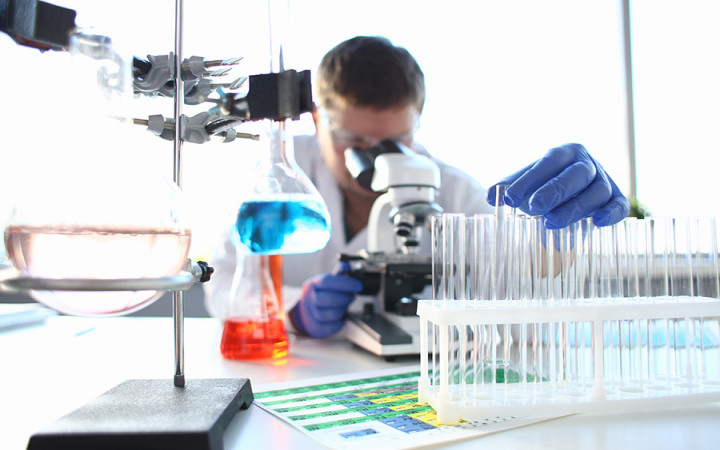Today’s Wonder of the Day was inspired by Laura from Weymouth, MA. Laura Wonders, “What is biology?” Thanks for WONDERing with us, Laura!
What if we told you that scientists were diligently working to extract dinosaur DNA from fossils, so that they could bring these ancient creatures back to life? You'd probably tell us that there are at least four movies that demonstrate in great detail why that's a bad idea!
OK, so maybe scientists aren't trying to bring the dinosaurs back to life. There are many scientists, though, who are working with the basic building blocks of life to create new processes and substances with a wide variety of potential applications.
Scientists call this emerging discipline synthetic biology. It brings together the ideas and methods of biology, engineering, and computer science. In practice, its achievements are seen in the areas of genetic engineering, pharmaceutical manufacturing, and molecular chemistry.
Synthetic biology has two primary goals. Some scientists hope to build new life forms from scratch from their fundamental chemical components. Others hope to produce substances that are hard to obtain naturally.
Does this sound like the stuff of science fiction? It's not. It's science and it's reality. Researchers break down DNA into smaller and smaller segments to learn what each segment does.
They then seek to patch together new segments of DNA to program cells to behave in new ways, sort of like how computer programmers use sections of computer code to perform certain functions within a larger program.
For example, in the 1970s and 1980s, scientists developed a bacterium that could digest petroleum components. In fact, the first biotechnology patent was eventually awarded for a microorganism that could help clean up oil spills.
Things have come a long way since then. In 2010, scientists at the J. Craig Venter Institute created the world's first synthetic life form. Based on an existing bacterium, the single-celled organism with a synthetic genome was built from three chemicals in a laboratory.
Synthetic biology has real promise for unique and important applications. For example, a team of scientists at the University of California—Berkeley has figured out how to modify E. coli and yeast to produce artemisinin, which is a drug used to fight malaria.
Although artemisinin already exists, it's very expensive and difficult to produce, especially for the countries where it's most needed. Using synthetic biology to produce artemisinin, however, could reduce the cost per dose by as much as 90%!
Beyond pharmaceuticals, other scientists are working on modifying E. coli, yeast, and similar organisms to create advanced biofuels. If successful, these efforts could lead to the invention of a major source of renewable energy.




